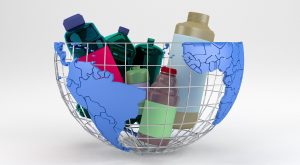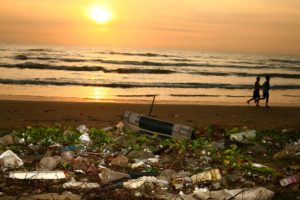Sectors, organizations, companies, and governments around the world work every day with the aim of achieving the Sustainable Development Goals (2015-2030), also known by their acronym SDGs. This initiative promoted by the United Nations sets the path to fight climate change and economic inequality, promote innovation, sustainable consumption, peace, and justice, amongst other priorities. And the plastics industry is no exception: the actors involved in this sector contribute to achieving five of the 17 objectives.
SDG 3: Good health and well-being
One of the first SDGs focuses on ensuring health and promoting welfare for all ages. Currently, the world continues to face an unprecedented health crisis. COVID-19 is destabilizing the global economy and dramatically changing the lives of billions of people around the world.
One issue this pandemic has brought up is the need for all countries to have the resources and capacity to provide quality healthcare to all who need it, regardless of the disease. But this would not be possible without many medical products made of plastic we are already used to, but which are indispensable in the work of health care professionals.
Just take a look around a doctor’s office and you will find this material everywhere you look, e.g. gloves, sterile syringes and adhesive bandages, intravenous blood bags or heart valves. Due to the barrier properties of plastic elements against bacteria, they are ideal for medical applications and facilitate the work of professionals while ensuring the safety of patients.
Other topics of interest: How COVID-19 has affected the recycling of plastics
On the other hand, it is also essential to be prepared to face new diseases and challenges in the health field. Plastic innovations allow the development of new procedures such as artificial plastic hearts, bacteria-resistant plastics or prostheses tailored to a patient’s needs thanks to the 3D printer technology.
SDG 7: Affordable and clean energy
The world moves towards this goal by making energy more sustainable. Thus, the European Union committed itself to reducing annual CO2 emissions by 780 million tons by 2020. This has required decision-makers, industry, and consumers to work together to achieve a greener lifestyle.
The plastics industry has joined this goal in several ways: in buildings, plastic provides effective insulation against heat and cold and prevents air leaks; in the case of renewable energies, wind turbine rotor blades and photovoltaic panels contain large amounts of plastic, making the production of this energy more efficient.
SDG 9: Industry, innovation, and infrastructure
Inclusive and sustainable industrialisation together with innovation and infrastructure is the ninth of these objectives. And, for more than a century, it is precisely science and innovation that have been, and continue to be, the DNA of the plastics industry. Being a resistant and lightweight material, it allows, for example, to reduce the weight of a vehicle, and consequently, requiring less energy to move it.
Other topics of interest: The constratint on single-use plastics is increasing, but what is their real impact?
Also, air conditioning systems used to cool homes and offices, that increase greenhouse gas emissions in the form of carbon dioxide, can be replaced by a film invented by scientists at the University of Colorado. The film cools buildings without the use of refrigerants and without any energy consumption.
SDG 11: Sustainable Cities and Communities
Another objective is related to making cities more sustainable. The world is becoming increasingly urbanised. Since 2007, more than half of the world’s population lives in cities. According to the United Nations this number is expected to rise to a 60% by 2030. This will result in a greater consumption of resources and, consequently, more waste. Due to this, eliminating plastic waste in any environment is the sector’s main priority. To this effect, recycling is the best alternative, as it allows the reuse of the plastic containers and elements that are consumed, giving them a second life, and guaranteeing the reduction of plastic waste.
SDG 14: Life below water
As it could not be otherwise, another of the goals set for 2030 has to do with the preservation of the oceans, since they drive the systems of the world that make the Earth habitable for human beings. Much of the food and even oxygen is provided and regulated by the sea. This is why it is essential to care and conserve them and the species that live in them. Regarding this issue, contrary to what it may seem, the plastics industry is totally involved in achieving this objective. In fact, there is a global initiative, Operation Clean Sweep, which aims to prevent the involuntary loss of pellets derived from plastic that end up in the sea. This project is coordinated at European level by Plastics Europe and in Spain, by the Spanish Association of Plastics Industries (ANAIP).







